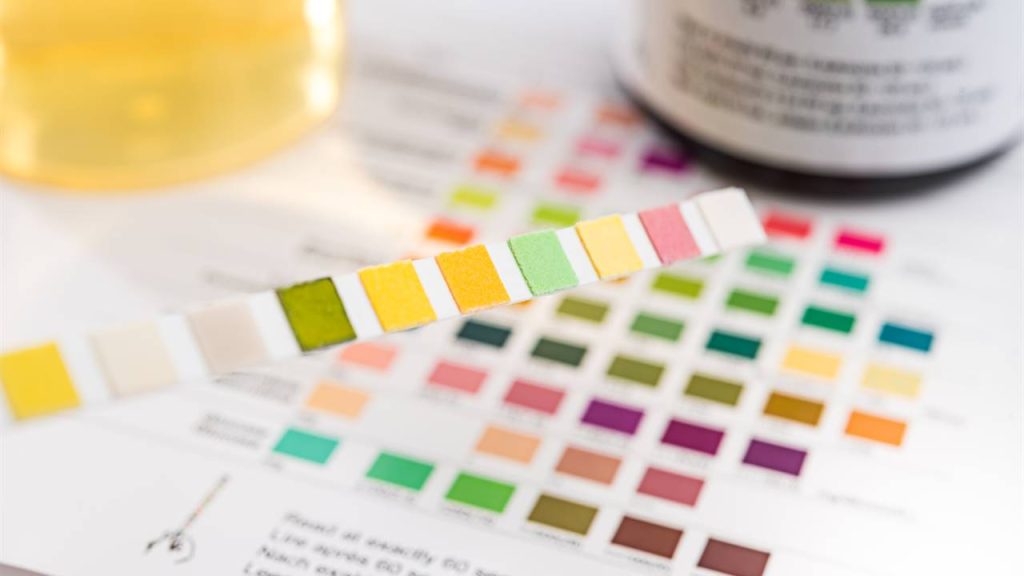pH balance plays an important role in the functioning of our body. Find out what the optimal levels are and why they may be altered.

- What is pH
- Acidic pH, neutral pH, or alkaline pH
- What is water pH?
- What is pH in the human body?
- What is skin pH?
- What is vaginal pH?
You may remember the concept of pH from high school biology classes or have heard it countless times in cosmetic advertising, but do you really know what pH is and why keeping it at proper levels is so important for health?
WHAT IS PH
pH is a measure of how acidic or alkaline a substance is.
The acronym pH stands for hydrogen potential or weight and indicates the concentration of hydrogen ions: the more hydrogen ion activity there is, the more acidity there will be.
ACIDIC PH, NEUTRAL PH, OR ALKALINE PH
The pH is expressed in a range from 0 to 14:
- A pH of 7 is considered neutral. That is, neither acidic nor alkaline.
- A pH below 7 indicates that there is acidity.
- A pH higher than 7 indicates alkalinity.
pH is a logarithmic factor and each figure indicates a 10-fold difference in the acidity or alkalinity of the substance. Thus, a pH of 5 is ten times more acidic than a pH of 6.
WHAT IS WATER PH?
Pure water is neutral (i.e., it is neither acidic nor alkaline), which corresponds to a pH of 7. However, a pH of between 6.5 and 8.5 is usually considered acceptable for drinking water.
pH is an important parameter for assessing water quality: water that is too acidic, when ingested, can adversely affect health.
WHAT IS PH IN THE HUMAN BODY?
The human body does not have a single pH, but varies greatly between different organs and fluids so that each can fulfill its function. For example:
- The pH of the blood (which is what is usually considered when talking about the pH of the body) is between 7.35 and 7.45, slightly alkaline. This level is ideal for many biological processes, such as blood oxygenation.
- The pH of the stomach is between 1.35 and 3.5. It is very acidic so that it can digest food and eliminate any germs that enter the stomach. In this video you can see a trick to check the acidity of your stomach.
- The pH of urine can range from 4.6 to 8.
- The pH of saliva is between 6.5 and 7.5.
Maintaining the proper pH in each of the organs and fluids is important for the body to function well and our body has systems to regulate pH levels through the kidneys, lungs, certain molecules, etc.
Abnormalities in the pH of the blood can be a sign of various diseases such as asthma, diabetes, heart, lung or kidney problems, infections or poisoning. They can be of two types:
- Acidosis occurs when the pH of the blood is below 7.35 (too acidic)
- Alkalosis, on the other hand, is when the pH of the blood is higher than 7.45 (too alkaline).
WHAT IS SKIN PH?
Maintaining an adequate skin pH protects the skin from infections and external aggressions. The advertising of many gels and cosmetics speaks of a neutral pH as the most suitable for the skin, but this is far from true.
As we have said, the neutral pH is 7, but our skin is more acidic: it has a pH of 4.7.
This is because the skin is covered with an acid mantle (mixture of water and lipids), which gives it the necessary acidity so that it can exercise its barrier function against infections and external aggressors. Using products with a pH higher than 4.7 can alter the skin’s microbiome and affect its protective function.
- It should also be borne in mind that external factors such as pollution or water increase the pH of the skin.
WHAT IS VAGINAL PH?
Normal vaginal pH ranges from 3.8 to 5.0, which means it is acidic. However, it depends on age: while in women of childbearing age the pH ranges between 4 and 4.5, this value can be higher than 4.5 before puberty and after menopause.
- When we have the period, the acidity of the vaginal pH decreases, which can be between 6.8 and 7.2.
- The vaginal microbiota is made up of different types of healthy bacteria that produce acid. In addition, vaginal fluid, which prevents dryness and maintains the chemical balance of the vagina, also contains acids.
- Vaginal pH has many implications for women’s health and can be a useful tool for diagnosing and preventing disease. In addition, maintaining vaginal pH balance is important for healthy pregnancies.
- There are many factors that can cause changes or imbalances in vaginal pH, such as infections, vaginal hydration level, sexual activity, or douching.



